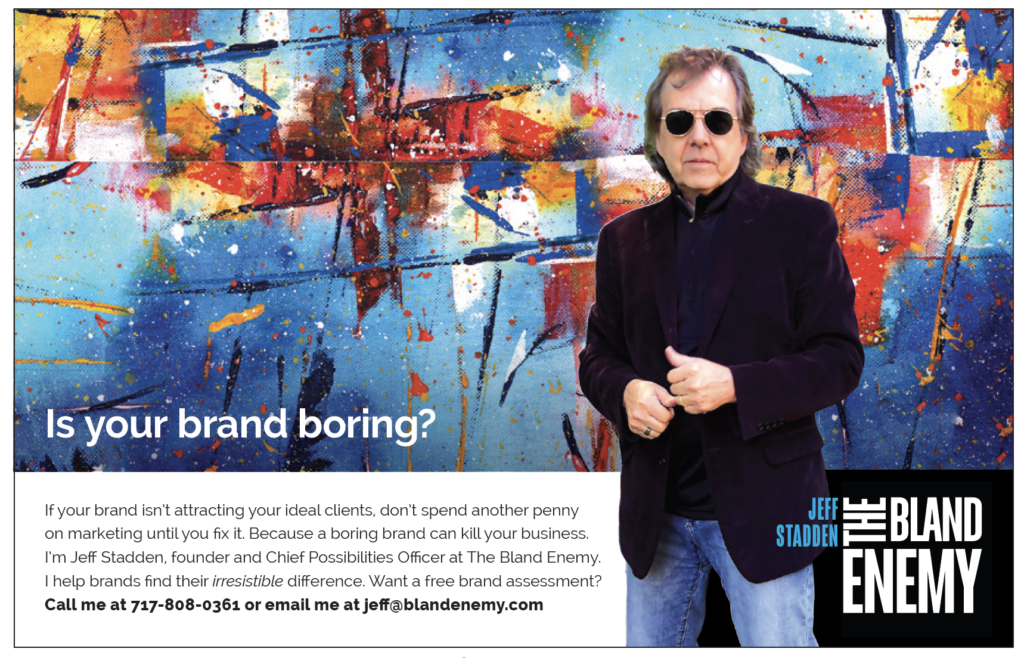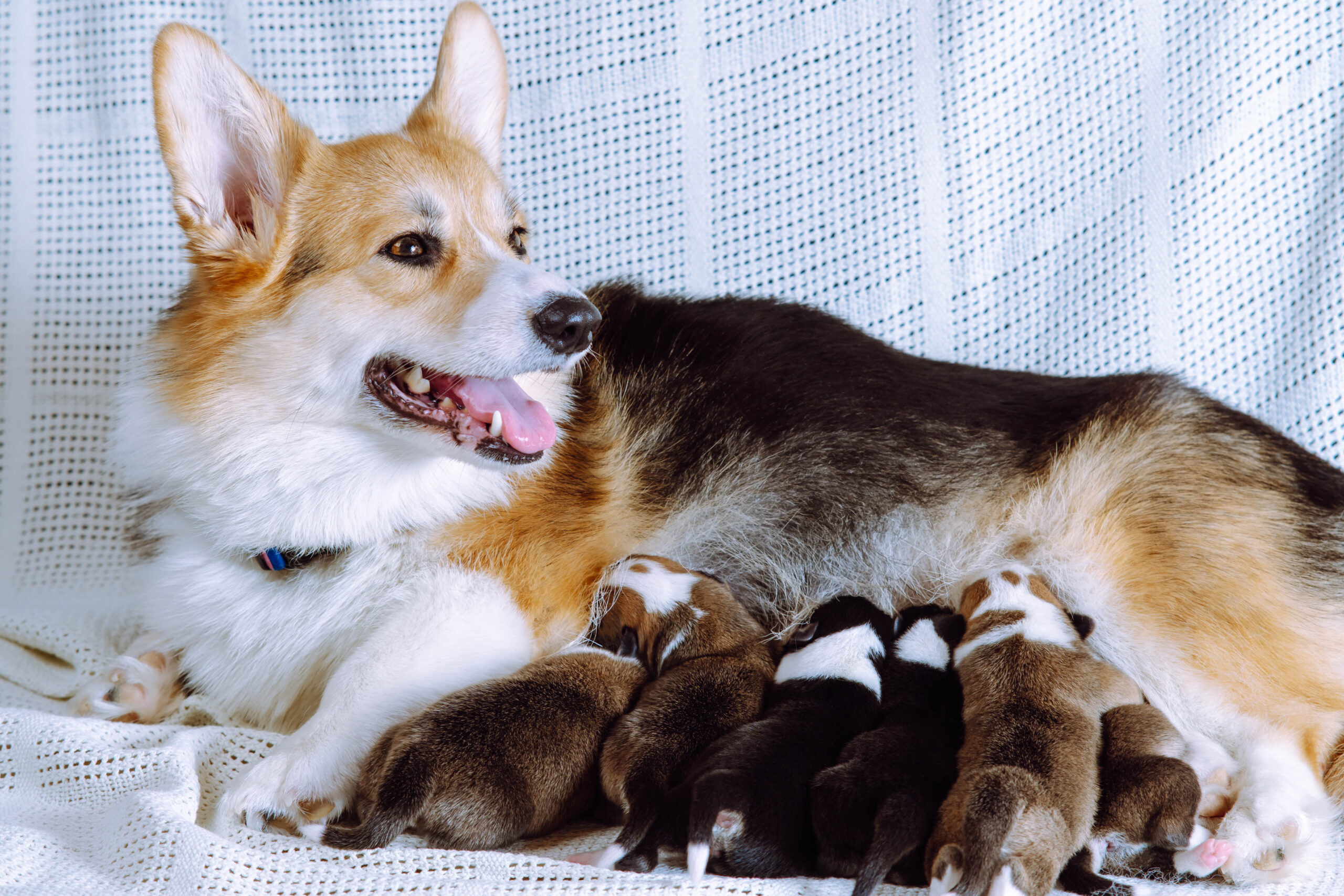
Myth Buster: Health Guarantees
POPULAR MYTH: Selling my puppies with a health guarantee only benefits the buyer and is a great way to stir up trouble.
Are you ever confused when it comes to branding, marketing, and advertising? Do you feel like you can’t make sense of it all? How do we know what’s working and what’s not working? How do we know advertising isn’t just a waste of money?
Well, our goal is to break these different subjects down in a continued series of Panel Discussions over the course of the next few issues. Some subjects might only have one contributor, and others may have a few, but we’ve chosen experts we think are the right fit for the right subject, in an effort to “de-confuse” one of the more confusing parts of owning a business.
The first part of any successful business is the brand, so that’s what we’re covering first.
Written By: Jeff Stadden
Hey there, I’m Jeff Stadden — founder of The Bland Enemy, a brand consultancy in Lancaster, PA (blandenemy.com) Let me turn your business into an unforgettable brand — one that’s a rock solid foundation for the success you’ve always dreamed of.
I’ll build a highly differentiated, “sticky“ brand that grabs the attention of your ideal customers, no matter how many competitors you have. And If your name is less than exciting, no worries, I’ll use my language skills to create the perfect name. In my process I dig deep to find the unique difference that sets you apart. Then I craft a thoroughly compelling brand story that engages your target audience, creating a group of loyal customers who’ll be your best advertising because they’ll tell all their friends. Call 717-808-0361 to chat, or email me at [email protected] to schedule a Zoom call to see if we’re a good fit.
You can start down that path to unforgettability today.
Can you define the word “brand”?
Sure. But first I have to say what it isn’t, because most people have the wrong idea. It’s not a logo. A logo is only an identifier, like the face of a person you know.
A brand is actually “the gut feeling a person has about a business, company, or organization. It’s your business’s reputation.” That definition isn’t mine. It was written by international brand expert Marty Neumeier, author of five books on branding. And I stand by it as the best definition there is.
Let me repeat the most important part of that definition: a brand is a gut feeling a person has. It’s nothing external to them. It’s not ads, websites, jingles, posters, or billboards. That means a brand has as many definitions as there are people who experience it.
One person can think very highly of a brand and another very poorly, all based on their personal experiences with it over time. Everyone’s perception of a brand will fall somewhere along the continuum from great to awful.
The good news is that a company can manage the perception of their brand. By creating positive experiences for customers a company will improve the gut feeling their brand generates.
It goes without saying that products or services must be excellent. But a huge part of boosting the good impressions of your brand is having great customer service. The negative impact on customers when representatives don’t understand them or care about them cannot be overstated. One person can ruin everything an entire company has worked hard for years to build.
The word “brand” should not be confused with the word “branding.” Branding is the consistent application of your brand at a variety of touch points through marketing. “Touch points” are all the places your customer comes into contact with your brand.

What are some examples of good brands in the dog industry?
I found three that are pretty good fairly easily. Certainly, there are many more:
Dog Food: Instinct Pet Food
Featuring a simple-tonavigate website and appealing colors, this brand is immediately inviting. They put real thought into the name. And the logo is friendly and relatable. I love how their packages address both the emotions and the intellect. On Instinct Original, the logo is bold orange on a field of white, with a gorgeous shot of a dog out in the field. Below that, percentages tell both how much good stuff is in it and how much bad stuff isn’t, assuring the buyer that it’s a logical choice. And all the while, the beautiful design is saying, “Take me home!”
https://instinctpetfood.com/products/originalbeef- dry-dog-food/
Dog Grooming: DOG by Dr. Lisa®
I simply love this company’s brand approach, with its overarching concern for dogs’ welfare and the environment. And their visual branding is stunning. It’s not the first time I’ve seen their approach to packaging. The brilliant brand name, DOG (for short), is black and super bold on a plain white background with tons of space around it. It says only what it needs to say — which is that you’re a dog lover and this is great stuff. The very small type that reads “by Dr. Lisa” (veterinarian Dr. Lisa Chimes) reassures us that this is something we can really feel great about. The packages convey healthiness; the website communicates that this is a product good for dogs, people, and the environment, and a bit of humor in the web copy creates fun and positive feelings.
Dog Breeding: Sundance Retrievers
You won’t find a much more beautiful and inviting website than this one. Beginning with a world-class logo in appealing colors that would look great on a T-shirt, the top of the home page shows a rotating series of video clips with dogs running in the field and families together, all to get your emotions engaged. But emotions don’t dictate the design of this site, creating a great user experience does. It’s clean, it’s packed with information, and it’s easy to find whatever you’re looking for. It includes an informative blog, profiles of the staff, and answers to frequently asked questions. The only thing it could use are a few testimonials from thrilled customers to give us the final assurance that we can buy from this breeder with confidence. Although we actually already know that.
https://sundanceretrievers.com/
Which should come first, the brand or the marketing? There’s no question that creating a brand has to come first. That’s because the brand serves the same function as the foundation of a building.
If a building’s foundation is strong, the floors built on top of it will be safe and secure. In the same way, if a brand is strong, the marketing built on top of it will be highly effective.
To be sure, great marketing is critical to the success of a brand. The sky’s the limit for a business that has both a great brand and great marketing.
I can’t suggest strongly enough that you don’t do marketing on a weak brand foundation. Great marketing will only accelerate the demise of a weak brand.
What are some examples of poor brands versus good brands?
It’s hard to remember examples of poor brands because they don’t stick in the mind. The very definition of a bad brand is one that’s forgettable, offering nothing engaging or relevant that makes it memorable. A bad brand is a boring brand: it doesn’t catch attention, it doesn’t hold attention, it doesn’t command attention.
On the other hand, a good brand is the opposite. It sticks in your mind and is nearly impossible to forget. It has what we call “stickiness.” Being “sticky” is an essential attribute of a great brand. McDonald’s has a large number of sticky assets that enable you to remember them easily — the golden arches, the white, red, and yellow color scheme, the ads with large pictures of the food, the commercials with the jingle you can’t get out of your head, and even the smell of the food itself.
No one forgets McDonald’s or gets it mixed up with Arby’s or Burger King or Taco Bell, all of which are also great brands with stickiness, because each of them has found a way to stick in the customer’s mind (or should I say gut) that’s different from the others.
A great brand always finds a difference, an empty space where they can interact with customers in a different way than anyone else. And there’s always room for another great brand, no matter how many brands are already competing in an industry.
Are people who are great at marketing automatically good at creating brands and doing branding?
Well, no, they’re certainly not good at creating brands. Marketers are not brand creators, and I would advise them to state that on their websites. But they ought to be good at branding — which is the consistent application of a brand at a variety of touch points — because that’s the essence of what marketing is.
The best marketers usually avoid the word branding because they know it will give the false idea that they create brands. They instead say they create effective marketing campaigns that consistently get the message out about your existing brand. They don’t claim to create brands. That’s honest, and I applaud them for that.
In the same way, brand creators shouldn’t claim to be marketers simply to get a sale. If they have a marketing department in their organization, or if they work with marketing consultants, then they can fairly say they offer marketing, but brand creation specialists shouldn’t claim to be marketing experts when they’re not. There is a ton to know about marketing and it’s changing all the time. A great brand needs great marketers.
However, even though brand creators aren’t experts at everything marketing includes, brand creation does require strategic marketing thinking. That is, a brand needs to be clearly differentiated from other brands. So the brand creator has to discover what that difference is — what is authentically unique that can be used as a basis for the brand message and subsequent marketing.


POPULAR MYTH: Selling my puppies with a health guarantee only benefits the buyer and is a great way to stir up trouble.

If you wanted to sell your puppies on a listing marketplace, the process used to be simple. You needed a picture of the puppy, a generic description, and your phone number. Then you waited for calls and usually sold your puppies within a week or two.

Whelping has always been an interesting and challenging subject for me. So much can go wrong, but when you have the experience and tools needed to help it go as smoothly as possible, it can be such a pleasant and exciting time. A bad whelping experience leaves a breeder with a bad feeling in the pit of his or her stomach for days, while a nice, problem free whelping experience can leave us feeling elated and rewarded.
Read along as we tap into the expertise of five dog breeders, in a variety of settings, with an amazing variety of advice and knowledge. Not every dog breeder agrees on all of the details, but as you know, there can be more than one way to something successfully. The goal for this Panel Discussion is to give advice and ideas, and then you, the breeder, can figure out how to implement what’s beneficial into your whelping program.
Oh, and don’t forget, this is only half of the questions! There’s more coming next time!